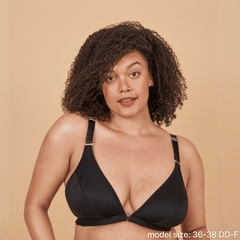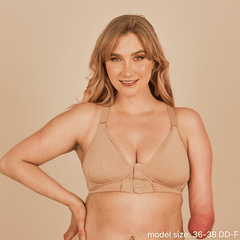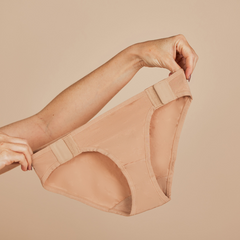What is NDIS?

The National Disability Insurance Scheme (NDIS) in Australia aims to provide support and assistance to individuals living with significant and permanent disabilities. It was established to enhance their quality of life and independence.
As part of this initiative, the NDIS offers financial support to increase accessibility and affordability of assistive devices and health services.
Program features include:
- Individualized support: The NDIS focuses on tailoring support plans to the specific needs and goals of each participant. It considers their individual circumstances and aims to enhance their independence, social participation, and wellbeing.
- Funding for services and support: Participants receive funding to access necessary services and supports. This funding covers a wide range of areas including assistive technology, personal care, therapies, and community participation programs.
- Early intervention: The scheme also supports early intervention for people with disabilities to mitigate the impact of their conditions and ideally improve their health outcomes.
- Lifelong coverage: The NDIS is designed to provide support across a person's lifetime since the focus is on conditions that are permanent and life-long. As a result, a large portion of participants are under 18 years of age.
The NDIS is funded by the Australian government and managed by the National Disability Insurance Agency (NDIA).
How does NDIS work?

Australia’s NDIS works by acting as an insurer or payer for individuals living with a permanent disability.
First, an individual would submit a request to the National Disability Insurance Agency (NDIA) outlining their situation and need for support. They would undergo assessments to determine their eligibility for the NDIS, which considers the impact of the disability on their daily life, functioning, and participation.
Once deemed eligible, participants work with the NDIA to develop a personalized plan. This plan focuses on the individual’s goals, needs, and preferences and includes funding allocations to access services, support, and assistive technologies.
Why was NDIS introduced?

Prior to the NDIS, the disability support system in Australia was fragmented and varied significantly across different states and territories. Access to support and services often depended on location, leading to disparities in the quality and availability of services for people with disabilities.
Many of these support systems and insurance schemes still exist, but NDIS was developed as a way of standardizing care. Its aim is to better support individuals with disabilities by giving them greater choice, control, and autonomy over the supports and services they receive.
It was envisioned as a long-term solution, providing support across an individual's lifespan rather than focusing solely on immediate needs.
NDIS who is eligible?

As we’ve mentioned, NDIS focuses on individuals with permanent or lifelong disabilities. This unfortunately heavily restricts who is eligible for coverage.
For example, someone who’s had a stroke is often ineligible for NDIS coverage because in some cases people make a full recovery from a stroke.
However, eligibility for the NDIS is not static. It can be reassessed as the individual's situation changes or if there's new information about their disability.
Eligibility Criteria Overview
- Residency: the person must be an Australian citizen, a permanent resident, or a New Zealand citizen residing in Australia at the time of application.
- Age: individuals under the age of 65 at the time of application can apply for the NDIS.
- Permanent disability: the disability must be a permanent and significant impairment that substantially reduces the person's ability to participate effectively in activities or perform tasks without assistance. The disability should cause significant impairments in one or more of the following areas: communication, mobility, self-care, self-management, or social interaction.
- Impact on daily life: the disability should significantly impact or affect the person's daily living, requiring ongoing support or assistance.
- Need for support: the individual must require support or specialized equipment now to reduce future needs, or early intervention to prevent future needs.
What are NDIS consumables?

NDIS consumables refer to a category of supports and items that participants can purchase using their NDIS funding. These items are considered essential, regularly used, and typically require replenishment or replacement due to wear and tear.
Some examples of NDIS consumables include:
- Incontinence products: such as disposable pads, absorbent underwear, catheters, and other aids for managing urinary or fecal incontinence.
- Cleaning and hygiene products: hand sanitizers, wipes, specialized soaps, and skincare products for sensitive skin.
- Walking aids: such as canes, crutches, or walking frames.
- Wheelchair consumables: items like wheelchair cushions, tubes, or tires that require regular replacement.
- Nutrition and feeding products: for individuals with specific dietary requirements, adapted cutlery or utensils.
- Sensory aids: items that aid in sensory stimulation or management, such as noise-canceling headphones.
- Assistive technology: hearing aids, communication devices, parts or components of assistive devices that require frequent replacement.
- Safety and daily living aids: non-slip mats, reachers, or grab bars for home safety and accessibility.
Consumables under the NDIS are considered necessary for a participant's daily functioning and are funded to ensure ongoing access to these essential items. The NDIS plan of each participant outlines the specific consumables that can be purchased using their allocated funding.
What counts as NDIS assistive technology?

NDIS assistive technology encompasses a diverse array of devices, from mobility aids like wheelchairs and walkers to communication tools such as speech-generating devices and augmentative communication systems.
Another example is adaptive apparel, which counts as assistive technology under NDIS guidelines.
Essentially, any technology or equipment designed to enhance the independence, functionality, and quality of life for individuals with disabilities falls under the umbrella of NDIS assistive technology, tailored to meet specific needs and goals.
What is low cost assistive technology?
The low cost assistive technology category started during the COVID pandemic as a way of providing participants flexibility in their spending.
It grants plan participants $1,500 from their existing Consumables or Assistive Technology budget on low cost AT that would be beneficial to them, is reasonable and necessary.
Depending on the plan, individuals may be able to purchase it on their own if they manage their plan or work together with their plan manager to purchase the desired items. It’s important that before purchasing assistive technology, individuals and their plan managers assess the equipment’s riskiness. A low risk device will be easier to justify.
Although NDIS is an Australian insurance plan, that does not limit where participants can buy low cost assistive technology from. It is easier for individuals to purchase items from Australian companies or Australia-registered companies, but it is not the only option.
For technologies that are not available in Australia, participants may still purchase the product if the company is willing to provide a Supplier Statement. With this statement in hand, an individual can purchase the product with the support of their plan manager.
For example, Springrose provides easy access to a Supplier Statement, so people can purchase their adaptive bras and intimates. They also work with plan managers on a case-by-case basis if other paperwork is needed to help individuals successfully purchase their technology.
This does not apply, however, if the budget you’d like to pull from is managed by NDIA. In that case, the company must be registered with NDIA as an assistive technology provider.
3 innovative NDIS low cost assistive technology items
1. Springrose Adaptive Bra
The Springrose adaptive bra redefines comfort and functionality for individuals with limited mobility. Its innovative front closure design gives women choice in how they put it on with eight ways to choose from, including one handed, by stepping in, or pulling it on overhead.
The front-adjustable straps and cushioned back closure, ensure ease of wear and personalized fit. With soft, breathable materials and adaptive features, it offers unparalleled support and comfort for everyday use.
2. Device to Improve Walking Mobility
De Oro’s NexStride is a cutting-edge wearable device designed to assist individuals with mobility challenges and/or Parkinson’s disease in overcoming gait and balance issues. Using personalized cues and auditory feedback, it enhances mobility and confidence, revolutionizing daily movement for those facing mobility challenges.
3. HominidX’s Gripping Device
HominidX’s Fiber is a game-changing assistive grasping device for individuals living with hand weakness or paralysis. It straps onto the wrist and hand, allowing individuals to easily grasp objects without grip strength. It can be used to hold cups, utensils, pens, phones, and many more everyday items.




